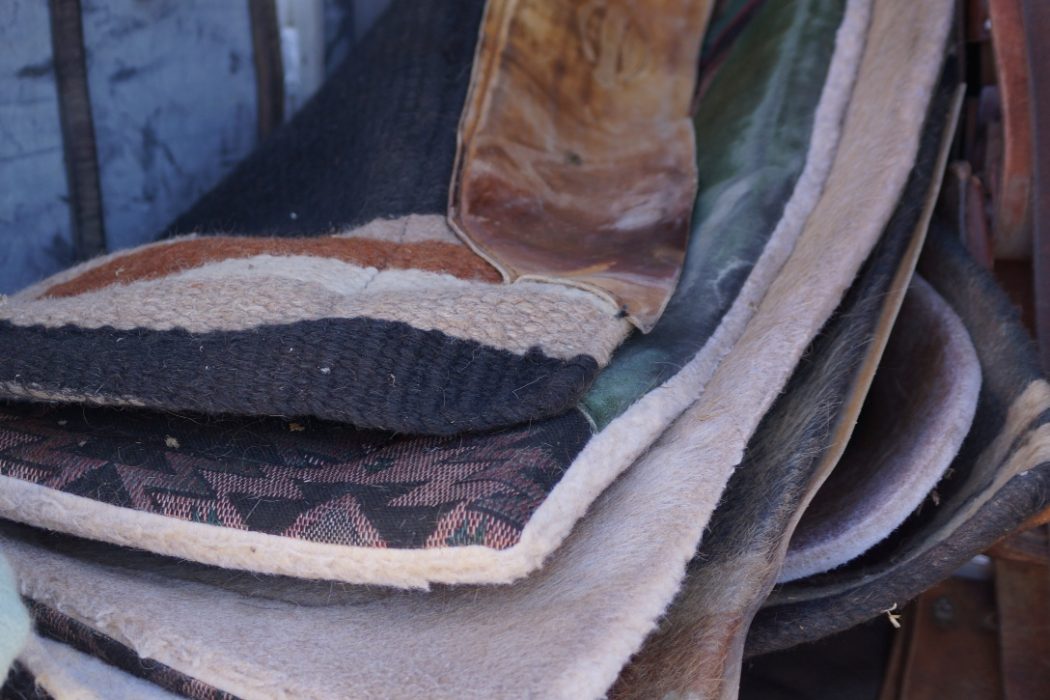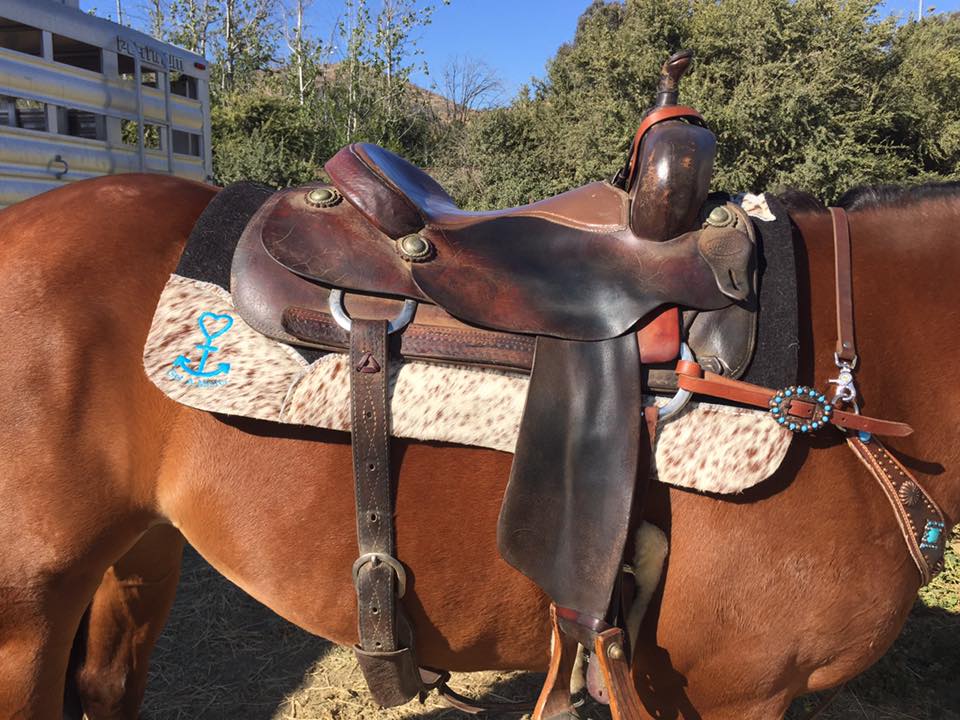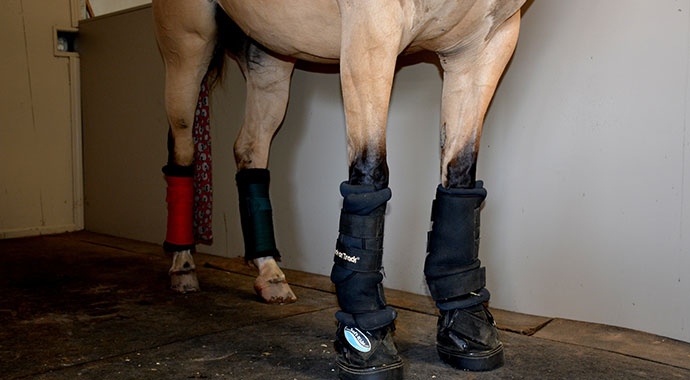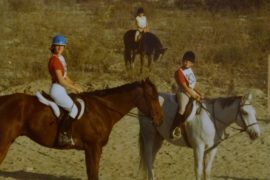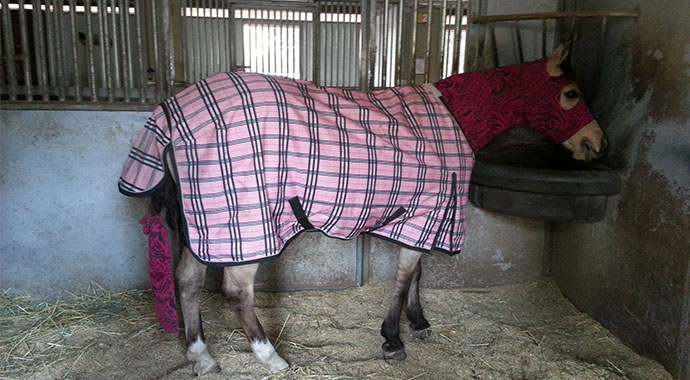So, I have a confession to make…I’m not extremely familiar – or comfortable – with Western tack. I have spent the majority of my life dedicated to the art of “English” riding, and “Western” equipment makes me feel a bit like a fish out of water. There, it’s been stated. This fact played out recently as I spent two weeks tacking up five horses four days a week (with some help) for the kids at Ag Adventure Camp. All five horses wore Western gear, and I had to play the part, as best I could, of the confident volunteer.
I found myself muttering a few things frequently under my breath as we tacked up. “What is with all of these huge and heavy saddle pads?” was one of the things that I found myself saying the most.
A few of the horses seemed to need a pile of pads, while others wore something thinner. Saddling was always a two-step process, which began first with placing the pad(s) and then returning with the saddle. And let me tell you, those saddles are heavy – I couldn’t lift one over my head to put it on the horse without knocking off the pad, I needed help every time!
Then there is the whole “girth/cinch” situation, which is a whole story unto itself, that you can find here: It’s a Cinch. The point is that I found myself needing to satiate my curiosity (and fulfill the requests of some loyal readers) as to the whole Western saddle pad “thing”.
The Fit, Function and Fun of the Western Saddle Pad
For expert information on this subject I turned to our local provider of Custom Western Saddle pads: Best Ever Saddle Pads, based in

Fit
No two horses are alike and saddle pad fit is of utmost importance to the horse. Holly has this to say regarding fit, “For me, the most important thing to consider is comfort. If my mare isn’t comfortable, she won’t be performing her best, which I’m sure is the same for everyone. I look for a contoured shape pad that will mold to my horse’s back, as well as provide an adequate amount of support around the withers. Another important element to consider is spinal column support. The last thing I want is for a pad to be too thin, and that’s why I go for a 1inch pad at the very least.”
I then asked about pad size relative to the saddle. Holly responded with this useful information, “Everyone has his or her own way of thinking a saddle pad should fit. For me, I like to see about three inches on both the front and back side of my saddle. I’ve always been told that if you have to choose, show more pad in the front so that as it naturally wants to slide back, you still have adequate support up front for your horse. Best Ever provides a saddle pad fitting guide on the website that helps customers choose the pad best suited for their particular horse.” Best Ever Saddle Fitting Guide.
Function
There’s no doubt about it, most western horses work hard. This is especially true when it comes to “working ranch horses”, “pack horses”, and “show horses”. The saddle design provides the rider the perfect tool for getting work done from the back of the horse, and saddles frequently stay on the horse’s back for long periods of time. So, what is the best material for a western saddle pad? Holly provided the following information, “The best material for a western pad would have to be wool. The material is thick enough to provide a supportive cushion on your horses back, but also has a moisture wicking component that keeps your horse cool and comfortable. This is especially important in the summer when the heat can take a major toll on your horse’s performance.”
Indeed, wool has been used for Western saddle pad material for over a hundred years. Even back in the “Wild West” days, we saw a lot of wool pads and saddle blankets. Traditionally, Western saddle pads last for a VERY long time, and wool is one of those materials that will seemingly last forever!
This led to my next question, what about fleece? Her response, “Fleece is generally added to the underside of a wool pad if your horse needs a little extra support. The fleece molds and shapes itself to the pattern of your horse’s back, filling in any spaces that a normal saddle pad might not. It is good for high intensity sports like roping, where there is a lot of pressure applied to the horse’s back at any given moment.”
I also noticed that there are a variety of different shapes for western saddle pads. Again Holly helped me understand the differences, “Western saddle pads can come in a variety of shapes. While trail riders or barrel racers may use a more rounded pad, a cutter or reiner is going to prefer a nice square pad. Most of the time this has to do with saddle shape. Trail and barrel saddles tend to be rounder, with less sharp edges. A cutting, roping or reining saddle is more of a square shape, and has those abrupt corners. So, the pad follows the shape of the saddle and covers any pressure points in relation to that shape.”
Fun
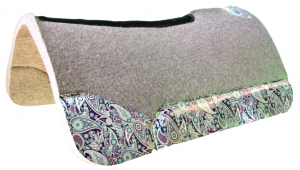
Western Saddle Pads really can be fun with color, design, logos and monograms. Best Ever Custom Saddle Pads is the perfect place to design your very own custom saddle pad. Here you will choose which collection the pad will be made from, as well as choose the Specs – Leather, Design, and Border – to fit you and your horse perfectly. Best Ever Pads website offers a digital rendering of each custom pad. This allows the customer to see the pad choice, wear leathers, custom text and thread color. Although customers aren’t able to see their custom brand or image right away, a mock-up is sent before production begins.
Above is Holly’s custom Best Ever saddle pad designed with her own livestock brand, her horse’s name and matching custom colors for her horse, “Get A Mister” who Holly calls, “Getta”. “Getta was trained rein-cow, and I have competed a handful of times with her in that, but we are also dipping our feet into barrel racing. So we may rodeo this coming year. We shall see!” exclaimed Holly, as she told me about her horse and custom saddle pad.
Additionally, you will find that many Western “show riders” will opt for a plainer working pad with good fit, wear leathers, etc., and then throw a “Navajo blanket” over the top of that pad while in the show pen for a little color, and to match their clothing choice. Best Ever Pads has great options for this as well.
Care of a Western Saddle Pad or Blanket
The fun is not over yet, we need to discuss how to properly care for a western saddle pad. Here’s what Holly recommends, “The easiest way to clean a western saddle pad is to hose it off and hang it to dry in the sun. Another way to clean your pad is to take a body brush to it, and lightly scrub off the dirt and hair that can accumulate on the underside of the pad.”
We also know of a handy tool Sleek EZ that quickly cleans the hair and dirt off a saddle pad. The most important thing to remember is that you do need to care for your pad, because if dirt or hair accumulates in certain areas, this can cause pressure points that will aggravate your horse’s back.
Common Mistakes Riders Make with Saddle Pad Choice
To wrap this saddle blanket story up, let’s look at the most common mistakes riders make with saddle pad choice. Holly helps us out here again. “Some common mistakes that I’ve seen include; purchasing stiff pads, pads that don’t offer adequate support and ill-fitting pads. All of these things can be detrimental to your horse’s performance, as well as their overall health. My best advice would be to try some pads to see what fits your horse best, because each animal is different. That’s another mistake… purchasing one pad for many different horses. A two-year-old prospect isn’t going to fit the same pad as an older sway back gelding. It’s all about knowing your horse’s needs.”
So there you have it, a look at the Fit, Function and Fun of a Western Saddle Pad.
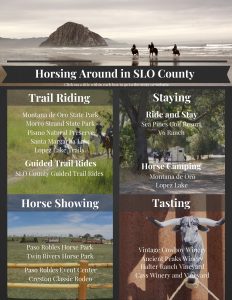 There are so many ways to horse around in stunning SLO County. To keep this info at your fingertips we have developed a FREE Hot Sheet that will direct you to stories which tell you where you can trail ride, stay with your horse, show and taste. We’ll continue to add horsing around stories to our website. You can stay up-to-date by becoming a SLO Horse News herd member. Get your Horsing Around in SLO County Hot Sheet here >.
There are so many ways to horse around in stunning SLO County. To keep this info at your fingertips we have developed a FREE Hot Sheet that will direct you to stories which tell you where you can trail ride, stay with your horse, show and taste. We’ll continue to add horsing around stories to our website. You can stay up-to-date by becoming a SLO Horse News herd member. Get your Horsing Around in SLO County Hot Sheet here >.

